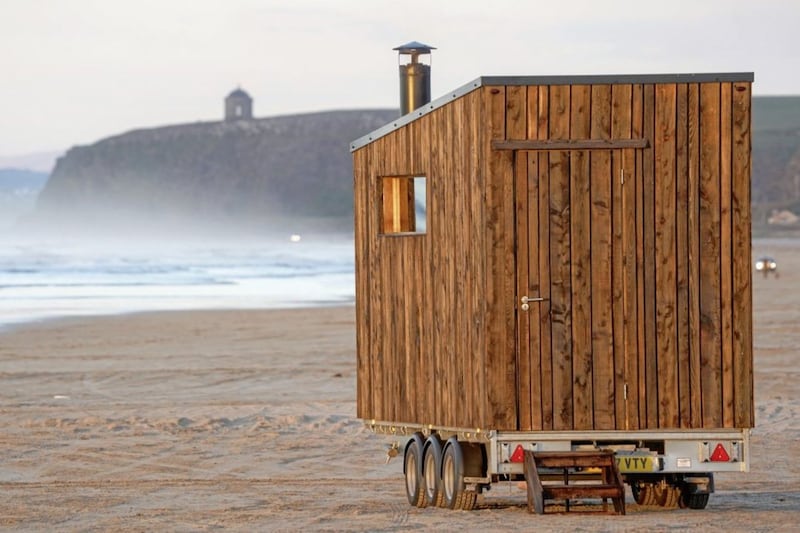A friend who’s currently a bit more committed to cultivation last year gave me six young Echium pininana. It’s taken them a while to come on, but all being well they should mature and flower this summer. If you’re not familiar with these spectacular plants, then you’re missing out. “Hollyhocks on steroids,” is how someone else described them, adding that the bees love them for a succession of flowers that lasts for weeks.
In their first year, this biennial is a rather underwhelming rosette of hairy, silvery leaves. In its second year, however, it develops a single central spike covered with small blue flowers that quickly heads skywards. Originating in the Canary Islands, where you’ll find them thriving on parched, seemingly infertile earth, the so-called tree echium can grow to up to 5 metres. Just ensure you plant them in full sun, in free draining ground, as they don’t like being waterlogged.
One of the many attractions of the Echium pininana is that it’s a prolific self-seeder, providing a free and bountiful supply of these elegant exotics year after year, if conditions are right. On the downside, they need to be handled with care, as the sap is an irritant and all parts of the plant are toxic if ingested.
But perhaps even more dispiriting for us gardeners is their tenderness. As is befitting of plants originating in the Tropics, they tend not to endure in sub-zero temperatures, and while all the evidence suggests our winters are getting warmer on average, there’s still the potential for an old-fashioned cold snap like we experienced earlier this month. It must be noted that while not necessarily good for some plant life, very cold weather can have a positive influence on our garden’s health elsewhere, killing off unwelcome pathogens and improving soil structure.
Plummeting temperatures damage a plant as the water in its cells expands as it freezes, ultimately killing it. Rapid thawing can also result in damage. Most of our perennials have adapted to deal with Arctic conditions, many losing their foliage, others retreating underground into dormancy for the duration of the winter and emerging in the spring when the temperature rises. There is always a risk that unseasonally warm conditions will prompt a plant to emerge from dormancy too early, or a late frost will damage fresh foliage, however, such attacks are rarely fatal.
With many annuals and biennials it’s different though, as they don’t have the built-in robustness that enables them to recover from such a shock to the system. If small enough to handle, plants can be brought under cover into a greenhouse or a sheltered area until the threat has passed but otherwise some common sense may help you avoid losing your prized specimens.

When selecting plants for the garden, choose those best suited to your location. For example, tender plants, such as Echium pininana, are much more likely to survive in moderate coastal areas, as opposed to gardens located inland at 200 metres-plus altitude. Do your research and opt for hardy and later flowering varieties.
If you do buy tender plants, plant them in areas where there’ll be some protection, such as close to a wall. In emergencies, when it’s not possible to move the plant, provide protection in the form of hessian, straw, horticultural fleece and even bubble-wrap. If snow falls, always remove it carefully from foliage at the earliest opportunity but not while it’s acting as insulation.








